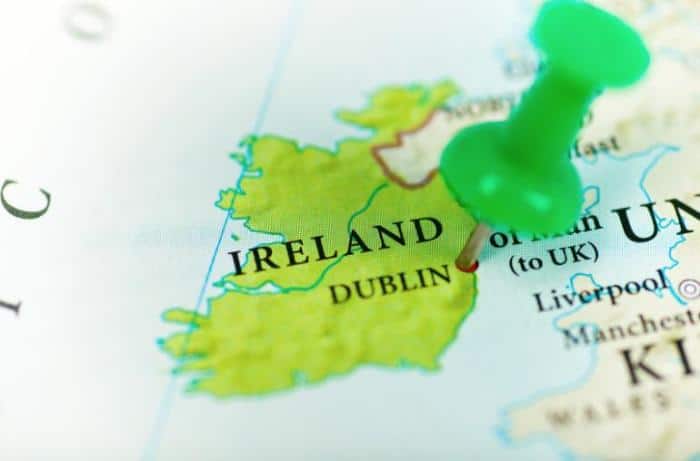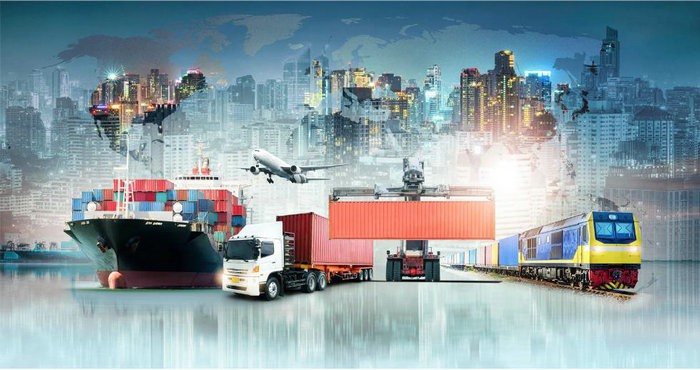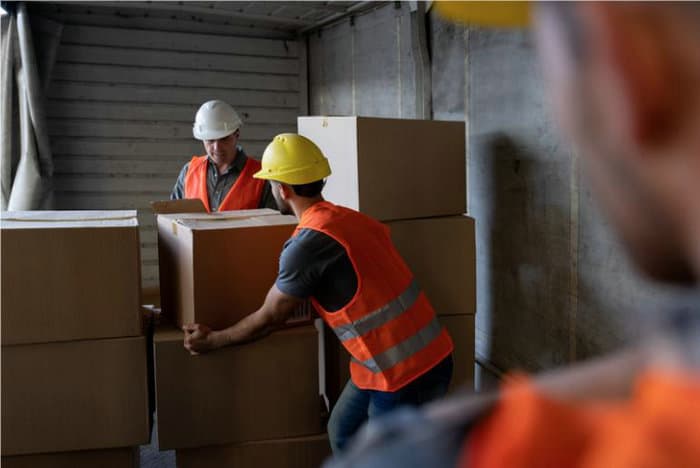
When shipping from China to Ireland, you engage with two of the world’s most dynamic marketplaces. As one of the global manufacturing powerhouses, China offers a vast range of products catering to diverse business needs. As an entrepreneur or business manager considering freight shipping from China to Ireland, understanding the nuances of logistics, customs procedures, and transit options is crucial to ensuring a smooth supply chain.
Your shipping journey from China to Ireland can take several forms, including air freight for urgent and high-value goods, and sea freight, which is more cost-effective for larger shipments. It’s vital to assess your cargo’s size, weight, and urgency to determine the most effective method. Sea freight options include less container load (LCL) and full container load (FCL), with transit times and shipping rates varying accordingly.
You should also be aware of the regulatory frameworks governing international trade between China and Ireland. Compliance with customs requirements is a non-negotiable aspect of the shipping process. Proper documentation and adherence to import/export regulations ensure that your goods move without delays. Consequently, choosing a reliable freight forwarder and understanding the intricacies of tariffs and taxation can help you optimize your shipping strategy.
Overview of Shipping Routes
When you ship goods from China to Ireland, you engage with a network of well-established maritime passages that form the backbone of international trade.
Traditional Shipping Lanes
Your cargo likely traverses the classic routes that imply a journey through the South China Sea, passing the Strait of Malacca, skirting around India via the Indian Ocean, and proceeding through the Suez Canal into the Mediterranean Sea. Upon exiting the Strait of Gibraltar, the shipment would make the final approach towards Ireland via the Atlantic Ocean. These routes are favored for their established infrastructure and frequent sailing schedules.
- South China Sea → Strait of Malacca → Indian Ocean → Suez Canal
- Mediterranean Sea → Strait of Gibraltar → Atlantic Ocean → Ireland
This traditional pathway is the backbone for shipping carriers, offering consistent and reliable service for your logistical needs.
Emerging Shipping Channels
In response to evolving trade dynamics, new routes are gaining prominence. The Arctic shipping route, notably, comes increasingly into play as polar ice melts. This route promises a shorter voyage from China to Ireland, potentially reducing transit times and fuel usage for shipping companies.
- Arctic Route: A shorter, weather-dependent alternative that is less developed but has potential for future shipping operations.
Emerging routes like these represent a shift in global shipping strategies, encapsulating efforts to optimize transit and accommodate geopolitical influences.
Regulations and Compliance
Adhering to the relevant regulations is vital when shipping from China to Ireland. You need to know the rules governing exports in China, imports in Ireland, and the international shipping protocols that apply to your cargo.
Chinese Export Laws
You must comply with specific export laws in China before your goods can leave the country. Key regulations include obtaining the proper export licenses and paying relevant taxes. For instance:
- Export Licenses: Certain products require a specific export license from the Ministry of Commerce.
- Taxes and Duties: All exports are subject to taxes, which vary based on the product category.
Irish Import Laws
Upon arrival in Ireland, your shipment must adhere to Irish import laws, which involve declaration and tax payments. Some specifics include:
- Customs Declarations: You must accurately declare your goods using the Single Administrative Document (SAD).
- Import Tax: Value-added tax (VAT) and customs duties depend on the value and type of imported goods.
International Shipping Regulations
Various international regulations govern the shipment of goods, including safety and environmental standards. Notable regulations include:
- Safety Standards: Comply with the International Maritime Organization’s guidelines for safe packing and container handling.
- Environmental Restrictions: Follow the international agreements on hazardous materials to prevent environmental contamination.
Shipping Methods

When shipping products from China to Ireland, you have several reliable options at your disposal, each with its own balance of cost, speed, and capacity. Carefully consider your logistical needs and budget when selecting a method.
Sea Freight Options
- Full Container Load (FCL): Your goods fill an entire container, optimizing space and potentially reducing costs. It is secure and ideal for larger volume shipments.
- Less than Container Load (LCL): Share container space with other shippers. This is cost-effective for smaller shipments but may result in longer transit times due to consolidation and deconsolidation processes.
- Roll-On/Roll-Off (RoRo) Services: For shipping vehicles or wheeled cargo, RoRo is a convenient method, as goods are driven on and off the ship.
Air Freight Options
- Standard Air Freight: This is the quickest shipping method, suitable for high-value or perishable goods, offering reliable arrival and departure times.
- Consolidated Air Freight: Combines your shipment with others to lower costs, though it may lead to longer transit times due to the consolidation process.
- Charter Services: For large quantities or special requirements, chartering a whole aircraft gives you maximum control over timing and routing.
Rail and Road Considerations
- Rail Freight: An economical and environmentally friendly option for shipping from China to Europe via the transcontinental rail network. It’s faster than sea and cheaper than air freight.
- Road Transport: Post-arrival, road transport is essential for the final delivery stage. It’s flexible and provides door to door service, though it is subject to traffic and weather conditions.
Cost Considerations
Shipping costs from China to Ireland will mainly consist of freight charges, customs and duty fees, and insurance costs. Understanding these expenses is crucial for effective budgeting.
Freight Charges
Freight charges are the fees you pay to transport your goods from China to Ireland. These charges vary depending on the mode of transport—sea, air, or land.
- Sea Freight: Sea freight is the cheapest shipping method for large shipments from China to Ireland; sea freight costs are calculated based on container size (20ft/40ft) and type (FCL/LCL).
- Air Freight: Air freight takes the shortest time from China to Ireland. Costs of shipping goods to Ireland via air are typically calculated by weight or volume. Expect to pay a premium for heavier or bulkier items.
Customs and Duty Fees
Customs and duty fees are compulsory and are determined by the value and type of goods imported into Ireland.
- Customs Value: Total value of imported goods, including the freight cost and insurance up to the EU border.
- Tariffs: Vary by product category. Check the EU TARIC database for specific rates.
- VAT: Currently at 23%, applied to the total customs value, plus any duty paid.
Insurance Costs
Insuring your shipment is critical to protect against loss or damage during transit.
- General Rate: Often 0.3% – 0.5% of the commercial value.
- Policy Types: Standard policies include ‘All-Risk’ and ‘With Average’ (WA). Choose based on risk appetite and nature of goods.
Timeframes and Scheduling
It’s essential to understand the shipping time from China to Ireland, including typical transit times, how they can change seasonally, and potential delays in handling.
Transit Times
Shipping from China to Ireland generally takes between 15 to 30 days by sea freight and 3 to 5 days by air freight. The specific duration depends on the chosen shipping method, carrier, and route. Below are average transit times:
| Sea Freight from China to Ireland | Air Freight from China to Ireland | |
| Direct | 20-22 days | 3-5 days |
| Indirect | 25-30 days | 6-7 days |
| Major Seaports in China | Major Seaports in Ireland |
| Shanghai | Dublin |
| Shenzhen | Galway |
| Ningbo | Cork |
| Guangzhou | Shannon Foynes |
| Hong Kong | Bantry Bay |
| Qingdao | |
| Tianjin |
| Major Airports in China | Major Airports in Ireland |
| Shanghai Pudong International Airport (PVG) | Dublin Airport |
| Shenzhen Baoan International Airport (SZX) | Cork Airport |
| Guangzhou Baiyun International Airport (CAN) | Shannon Airport |
| Beijing Capital International Airport (PEK) | |
| Hong Kong International Airport (HKG) |
Seasonal Fluctuations
Shipping times can be affected by seasonal fluctuations, particularly during the Chinese New Year and Christmas when delays are common due to high demand. Plan your shipments with the following in mind:
- Chinese New Year: Late January to mid-February – extended production and shipping times.
- Christmas Season: Late November to early January – increased volume of shipments leading to potential delays.
Handling Delays
You may also encounter handling delays due to customs clearance or inspections both in China and Ireland. Such delays might add 1 to 5 days to your total shipping time. Key points include:
- Customs Clearance:
- China: 1-2 days
- Ireland: 2-3 days
- Inspections:
- Based on random checks or documentation issues – anticipate a potential additional 1-2 days.
Customs Clearance Process
Navigating the customs clearance process is a critical step while shipping from China to Ireland. You’ll need to handle specific documentation, engage with customs brokers or agents, and ensure duty payments are accurate for your shipment’s release.
Documentation Requirements
Your shipment must be accompanied by the right set of documents for successful customs clearance. These typically include:
- Commercial Invoice: Details the value, quantity, and description of goods.
- Packing List: Itemizes the contents of the shipment and includes weight and packaging details.
- Bill of Lading (B/L) or Air Waybill (AWB): Serves as a contract between the owner of the goods and the carrier.
- Certificate of Origin: Verifies the country in which the goods were manufactured.
- Import/Export Declaration: Required by both Chinese and Irish customs authorities.
For specialty goods, additional certifications or licenses may be required.
Customs Brokers and Agents
Employing the expertise of customs brokers or agents can facilitate smoother clearance. Responsibilities include:
- Filing Entries: Submit all required documents to Customs and Revenue Commissioners.
- Classification: Accurately classify goods under the Harmonized System (HS) for duty rates.
- Expert Guidance: Advise on tax and duty exemptions, trade agreements, and prohibited items.
Ensure your chosen agent is licensed and has a profound understanding of both Chinese and Irish customs regulations.
Duty Payment and Release
Upon arrival in Ireland, duties and taxes must be calculated and paid before your shipment is released:
- Calculation of Duties and Taxes: Based on the shipment’s value, classification, and applicable trade agreements between China and Ireland.
- Payment: Prompt payment ensures no delay in the release of your goods. Payments can typically be made electronically or via deferred payment schemes, if eligible.
Once duties and taxes are settled, customs will release your shipment for further distribution or pickup. Always verify the accuracy of the charges to prevent overpayment or future disputes.
Logistics and Warehousing
When importing to Ireland from China, understanding the roles of logistics and warehousing is crucial. Efficient storage, management, and distribution ensure that your goods arrive on time and in good condition.
Storage Facilities
Your goods will be stored in secured storage facilities between transportation phases. These facilities are typically equipped with modern shelving systems, climate control, and security systems to protect your merchandise. In key Irish cities such as Dublin, Cork, and Galway, warehouses may range from large-scale distribution centers to smaller, specialized storage units, each selected based on proximity to transport links and your specific needs.
Inventory Management
Inventory management within these warehouses is a critical service to track and control your goods. Utilizing advanced warehouse management systems (WMS), items are often barcoded and monitored for real-time inventory assessment. This not only helps in maintaining stock levels but also in forecasting demand and reducing handling times, thereby optimizing the stock flow from China to Ireland.
- Key Features of Inventory Management Systems:
- Real-time tracking
- Stock level alerts
- Order processing
- Historical data analysis
Distribution Networks
The distribution networks play a pivotal role in the final delivery of your shipment. Ireland’s strategic location enables access to various distribution routes, including road, air, and sea. Once your goods reach Ireland, they are typically transported through a network of reliable carriers who offer various shipping options tailored to your time and cost requirements.
- Primary Distribution Methods:
- Road freight (including last-mile delivery)
- Air freight for urgent shipments
- Sea freight for larger consignments
Your choice of storage facilities, inventory management practices, and distribution networks directly impacts the efficiency of shipping from China to Ireland. Selecting the right partners in these areas is essential for ensuring a smooth and successful delivery process.
Packaging and Handling

Effective packaging and handling are critical for ensuring that your goods arrive from China to Ireland in excellent condition. Complying with safety standards, adhering to proper loading and unloading procedures, and selecting the right packaging materials can significantly impact the integrity and security of your shipment.
Safety Standards
Your shipments must meet international safety standards to ensure they are legally transported across borders. You are responsible for:
- Compliance with International Plant Protection Convention (IPPC) regulations: Ensuring wooden packaging is treated against pests.
- Adherence to International Maritime Dangerous Goods (IMDG) Code: Properly labeling and handling hazardous materials.
Loading and Unloading Procedures
Loading and unloading your cargo requires systematic procedures to prevent damage. Key points are:
- Use of proper equipment: Forklifts, pallet jacks, and cranes should be appropriate for the weight and dimensions of the cargo.
- Trained personnel: Only workers with adequate training should handle the cargo to minimize the risk of accidents.
Packaging Materials
Selecting quality packaging materials is essential to protect your items during transit. Your choices should include:
- Durable boxes and crates: Opt for materials that can withstand stacking and shifting during transport.
- Protective internal cushioning: Bubble wrap, foam inserts, or packing peanuts should be used to prevent internal movement.
Risk Management
When shipping from China to Ireland, it’s crucial for you to mitigate risks effectively to ensure a smooth transit. Focused strategies in loss prevention, quality control, and contingency planning are key to managing the myriad risks associated with international shipping.
Loss Prevention
- Shipping Insurance: You should secure comprehensive insurance coverage for your cargo. This will protect against potential losses due to theft, damage, or accidents during transit.
- Packaging Standards: Ensure your goods are packaged according to international standards to minimize damage risks.
Quality Control Measures
- Vendor Screening: You must carefully screen your Chinese vendors for reliability and adherence to quality specifications.
- Inspection Protocols: Implement pre-shipment inspections to identify and address quality issues before goods leave the factory.
Contingency Planning
- Route Optimization: Regularly review and optimize shipping routes to avoid delays and geopolitical risks.
- Backup Suppliers: Establish relationships with backup suppliers in case of disruptions with your primary supplier.
Industry Trends
When importing from China to Ireland, staying informed on industry trends is vital for optimizing your logistics and ensuring the efficiency of your supply chain.
Technological Advancements
You will find that companies are increasingly leveraging technology to streamline shipping operations. Automation in the form of autonomous vessels and drone shipping is on the rise, which can lead to faster transit times. Additionally, tracking systems have become more sophisticated, providing you with real-time updates and analytics to enhance visibility throughout the shipping process.
Economic Factors
The economic relationship between China and Ireland affects shipping dynamics. Recently, fluctuations in currency exchange rates have impacted shipping costs. Moreover, trade agreements and tariffs can also alter the cost structure. It’s important for you to monitor the Belt and Road Initiative, as it continuously evolves, further influencing trade routes and economic ties.
Environmental Impact
Environmental regulations are shaping shipping practices. Stricter emission standards are being imposed on shipping carriers to reduce pollution. In response, many companies are investing in cleaner fuel options and more energy-efficient ships to minimize their environmental footprint and comply with international standards. As you consider your shipping options, be aware of the potential extra costs associated with these greener alternatives.
Why Choose Us? Luckystar Logistic
Luckystar, founded in 2022, is a distinguished member of the Federal Maritime Commission (FMC) and operates as a Non-Vessel Operating Common Carrier (NVOCC). The freight forwarding company primarily serves China, the USA, Canada, and Europe, striving to offer top-notch service quality at lower costs. With a core team possessing over 20 years of logistics experience, Luckystar brings substantial expertise to the table. Since its establishment, the company has remained steadfast in its commitment to offering global door to door shipping solutions, focusing on reliability, flexibility, and promptness.
We leverage our route knowledge and relationships to optimize logistics, balancing cost, speed, and reliability. We offer the best solution and shipping service from China to Ireland.
Please contact us for further assistance if you have any other questions or need more details on the freight service and door to door delivery. We strive to help businesses make informed freight mode selections and facilitate smooth trade flows from China to Ireland.
